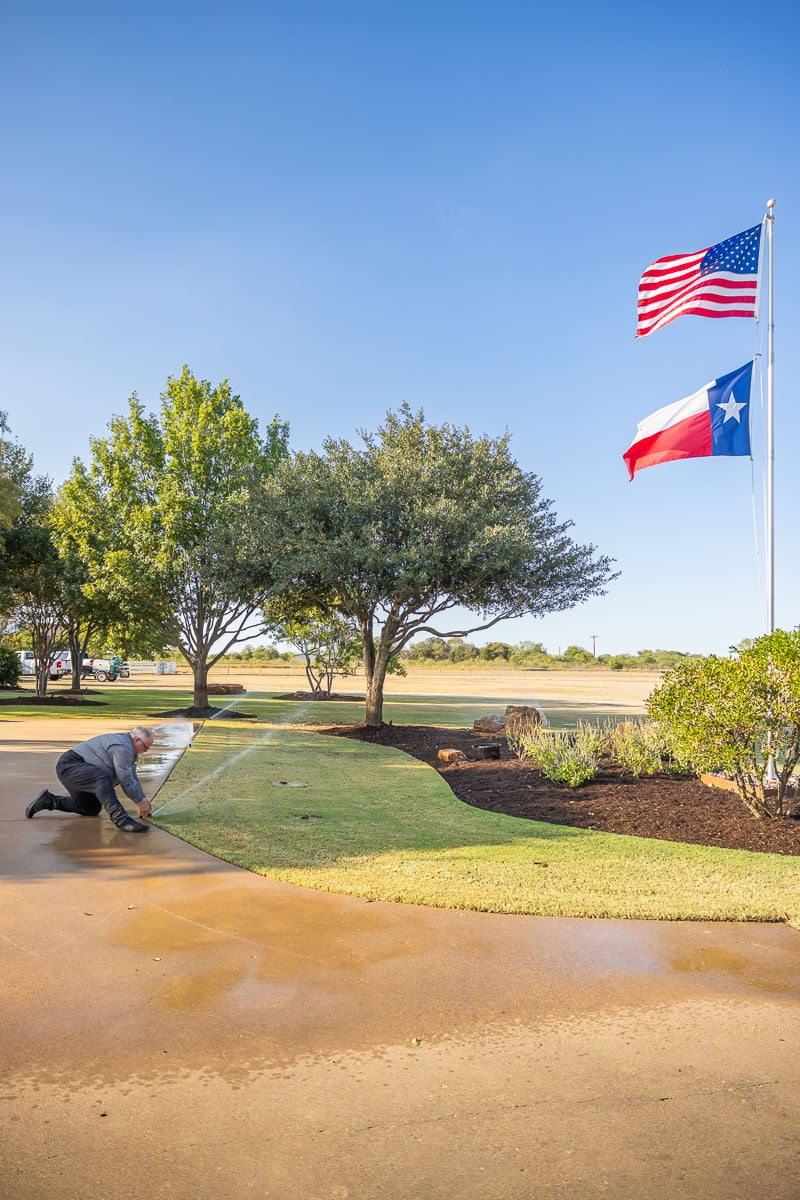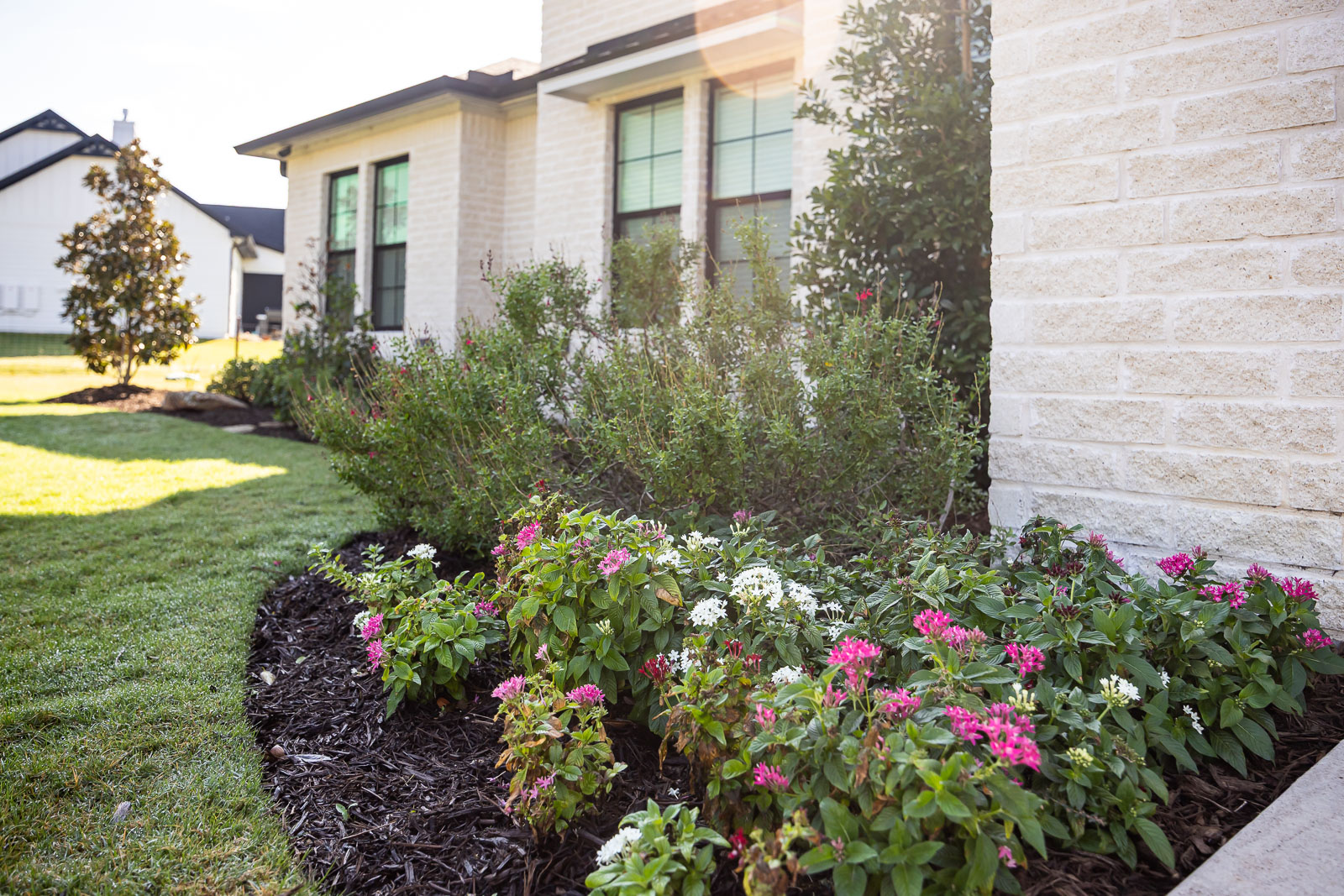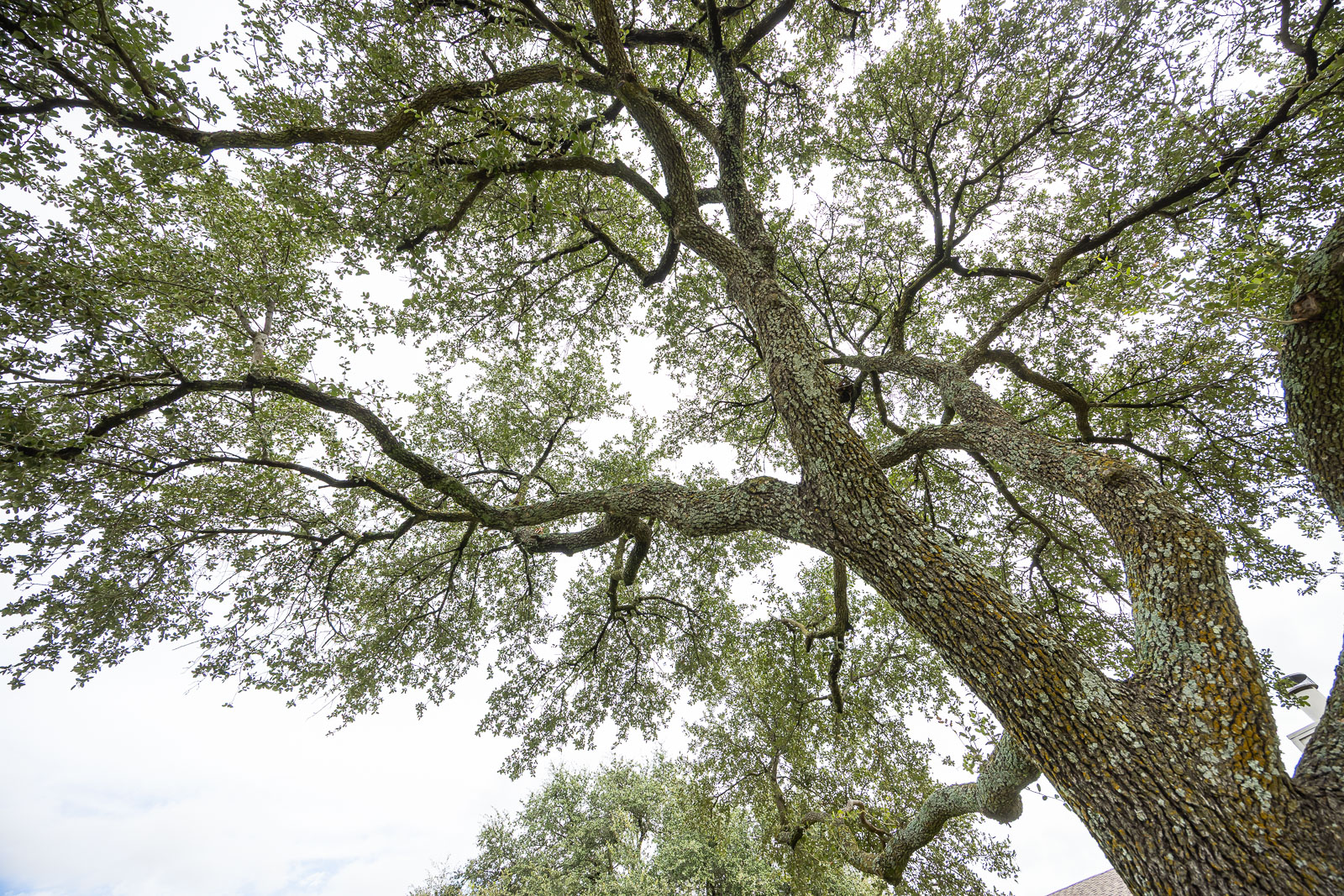
Written By Brent Ackors
Figuring out how much to water your lawn in Central Texas can be downright confusing. With so many factors at play–weather, soil type, irrigation system, and the ever-changing Texas climate–it’s easy to feel frustrated when your lawn isn’t looking its best, despite your best efforts.
Maybe you’ve tried running your sprinklers for a certain amount of time, but you’re still left with patches of brown grass or soggy spots that just don’t look right. The good news is, you’re not alone, and it doesn’t have to be so complicated.
The truth is, watering your lawn isn’t about how long you run your sprinklers, but how much water your grass actually gets. Knowing the right amount of water for your lawn is key to helping it thrive. Proper watering is essential for healthy, deep roots, strong grass growth, and a lawn that can handle the hot Texas summer without looking like it’s been through a drought.
In this blog, we’ll clear up the confusion around watering, guide you through the right amount of water for each season, and explain why a smart irrigation system can make your life a whole lot easier.

How Long to Water Lawn in Texas: A Seasonal Breakdown
When it comes to watering your lawn in Central Texas, it’s all about balance. You want to give your grass just the right amount of water–not too much, but enough to keep it happy and healthy. While the number of minutes you set your sprinkler to run might seem important, what really matters is exactly how much water your system delivers, measured in inches. And that can vary depending on your sprinkler system. Here’s a breakdown of general watering needs by season:
- January- February: Most lawns need about ½ inch of water per week, which can come from a mix of rain and sprinklers.
- March-April: Your lawn needs about 1 inch of water per week.
- May-August: During the hottest months, aim for about 1 ½ inches of water per week.
- September: As temperatures cool off a bit, 1 inch per week is typically enough.
- October-December: In the fall and winter months, ½ inch per week should be sufficient.

So, how long should sprinkles run in Texas?
This is where it can get a bit tricky. The minutes you set your sprinklers to run depends on how much water your system delivers per hour. For example, a spray head will put out four time smore water per minute than a turf rotor, while a drip system will deliver less than a gallon per hour per emitter–so it’s much slower and takes longer.
Knowing how much water your system is putting out helps you adjust the watering schedule to meet your lawn’s needs. The key is figuring out how many inches of water your system delivers per hour, which will help you get your watering times just right.
And remember, the best time of day to water for efficiency is early in the morning–around 4 am. The winds are calm, the sun isn’t out yet to absorb the water, and it’s done befor eyour pets or family are up and about.

How to Water a Lawn: Consider Climate, Soil, and Plant Watering Needs
When it comes to keeping your lawn lush and healthy in Central Texas, understanding how climate, soil, and plant needs all play a role in your watering strategy is key. It’s not just about dumping water on your lawn and hoping for the best. It’s about making sure your system is in tune with the environment, your plants, and the local conditions. Let’s break it down ot hel you get hte most out of every drop.
1. Climate and Weather Conditions:
As you know, Central Texas has a climate that can go from sunny to dry to rainy and humid in a matter days. Knowing how to adapt to these fluctuations is critical.
- Sun vs Shade: Lawns in full sun will require more water than those in the shade because they lose moisture more quickly. A well-designed sprinkler system should have sun zones and shade zones so each part of your lawn gets the proper amount of water. If your sprinkler system doesn’t differentiate between, it can lead to overwatering in shady areas and underwatering in the sunniest spots.
- Wind: Wind, especially in the spring, can dry out plants faster than you might realize. It’s like the effect of a blow-dryer on your hair–wind accelerates evaporation. If you live in an area prone to windy conditions, consider adjusting your watering schedule to combat the faster drying times. Wind, like temperature, increases the evaporation rate of water from your soil and plants.
- Drought Conditions: Unfortunately, when drought hits, watering schedules are often dictate by water supply companies. Cities and rural water supply companies may impose mandatory restrictions, limiting how much you can water. In these situations, you’ll be on a limit of water use, and there’s not much you can do but follow the guidelines. Make sure to stay informed on local restrictions to avoid fines and overuse of water.

2. Soil Type and Water Retention
The soil in your lawn has a big impact on how water behaves. Central Texas is known for having heavy clay soil, which can retain moisture but also has poor drainage. Here’s how to adjust your watering based on soil type:
- Clay Soil: If your soil is clay-heavy, the water will stay in place for longer but may take more time to penetrate deeply. In this case, watering deeply but less frequently is the best strategy. This allows the water to reach the root zone without sitting on the surface or running off. Make sure your sprinklers are set to water deeply and not just wet the surface.
- Sandy Soil: If you’re lucky enough to have sandy soil, it drains quickly but doesn’t hold water well, meaning you’ll need to water more frequently but for shorter durations. Keep an eye on moisture levels because it can dry out faster.
3. Plant Needs and Evapotranspiration:
Each plant in your lawn has different water requirements, so understanding those needs will help optimize watering. The technical term that determines how much water a plant needs is called evapotranspiration–this refers to how water moves from the land to the atmosphere, combining both evaporation and plant transpiratino (the process where plants lose water through their leaves).
- Turf vs. Trees: Grass typically requires more water than established trees or shrubs. While turf will need consistent watering during the warmer months, mature trees can survive with less frequent watering since their roots are well established and can access water deeper in the soil. Pay attention to the needs of each plant type on your property and water accordingly.
- Seasonal Variations: During the hottest months, your lawn will naturally experience higher evapotranspiration rates, meaning it needs more water. During cooler months, evapotranspiration decreases, so watering needs are lower.

Partnering with Green Ackors for Your Irrigation Needs
Keeping your lawn lush and healthy in Central Texas requires a thoughtful approach to watering–one that takes into account the unique climate, soil types, and seasonal changes. By understanding the right amount of water your lawn needs throughout the year, adjusting for local weather conditions, and paying attention to the specific needs of your plants, you can create a more efficient watering system. Remember, it’s not just about setting your sprinklers and walking away.
One of the best ways to ensure your lawn gets the right amount of water is to use a smart irrigation system. In Texas, it’s required to have a rain sensor, which helps your system detect rainfall and prevent watering right after it rains. But with a smart irrigation system, you’ll have even more control. These systems can predict upcoming rain and adjust watering schedules accordingly, saving both time and money. They’re an investment that can pay off with healthier grass and reduced water waste.

If managing your irrigation system feels too overwhelming or frustrating, our team at Green Ackors can offer professional setup and maintenance so you can trust that your irrigation system will be efficient.
Need help managing your irrigation system in Central Texas? Get started today by filling out our contact form.
%20-%20copy.png)



